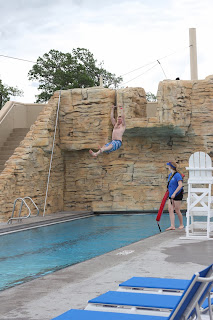Utility boxes on East Lake St. feature 20 Longfellow artists

Longfellow is home to some amazing artists. And now more people know about them thanks to an art installation along East Lake Street that features 20 artists.
Earlier this year, 10 utility boxes along East Lake Street and five on the Midtown Greenway were covered with artwork. The 10 boxes on East Lake Street are under the "I'm A LoLa Artist" theme, which is a series of public art installations the Longfellow Community Council (LCC) and the League of Longfellow Artists (LoLa) have coordinated throughout the neighborhood.
In 2012, a series of 56 posters were placed in storefronts along East Lake Street that included an image of a LoLa artist, an image of their art, and a quote from them as to why they do what they do. This idea was replicated on the utility boxes.
"I believe there are double benefits to the art on utility boxes: it takes what can be an eyesore and makes it visually interesting," said Longfellow artist Bob Schmitt of Laughing Waters Studio. "But also it is featuring not just the work of artists, but the work of artists who live/work in this particular Minneapolis neighborhood."
"The primary goal of the project is to prevent and reduce graffiti," noted Spencer Agnew of the Longfellow Community Council (LCC). "Utility boxes in their natural state are a blank canvas for graffiti and are frequently tagged. Other neighborhoods, like Kingfield, have had success preventing graffiti by installing public art. LCC has taken a similar approach in the past through mural projects at neighborhood commercial buildings, but this is our first utility box art project."
Schmitt was responsible for selecting which artists were featured on the utility boxes. With an eye to whose work would look good enlarged to that scale, Schmitt also factored in compatibility with another work and coolness of their quotes.
His own work is featured at Lake and W. River Parkway. Schmitt is a landscape painter, art teacher, designer, gardener, with a passion for children and their families.
“I paint the landscapes I love (Lake Superior, Minnehaha Falls) but in the traditions of Chinese brush painting. I hope to convey hope and peace in my work,” said Schmitt.
Before pursuing art full-time by opening Laughing Waters Studio, he owned a graphic design business for 25 years. See more at http://www.laughingwatersstudio.com.
“The whole experience of LoLa has been this uncovering of an incredible group of artists residing in this little corner of the city,” observed Schmitt. “In the past, Lowertown, NE Minneapolis, Seward were known to be hotbeds of artistic talent and showcased in their art crawls. Who knew that this quiet little corner of Minneapolis contained so many and such a variety of art and artists.”
He added, “Another richness of LoLa, and by extension this great streets project, is that it represents people who are professional artists and making their living that way, to people who are just creating for the love of creating, to inexperienced or young artists who are just beginning to show their work.”
The utility box project was funded by a grant from the city of Minneapolis Solid Waste & Recycling Division through the "Innovative Graffiti Prevention" program.
ABOUT LOLA
The League of Longfellow Artists is dedicated to bringing to light the treasures of artistic expression created by artists living or working in the Greater Longfellow neighborhood of south Minneapolis (the geographic area defined as east of Cedar Avenue to the Mississippi River, and south of 28th Street to the Crosstown).
Having begun in the summer of 2009 as a small grassroots effort initiated by artists Anita White and Bob Schmitt (and creatively named by neighborhood activist Shirley Nielson), LoLa now flourishes as an annual art crawl that is managed as an artist-run community.
During its first year, 42 artists were featured at 20 different sites. Last year, it had grown to 69 sites and 115 artists. This year, expect 150 artists at 80 sites.
LoLa is committed to raising the visibility of local artists in the Longfellow neighborhood and to building a true sense of community for these artists.
Throughout the year a variety of informal gatherings are offered to support neighborhood artists around topics, types of work, use of electronic media and more. Learn more at lolaartcrawl.com.









